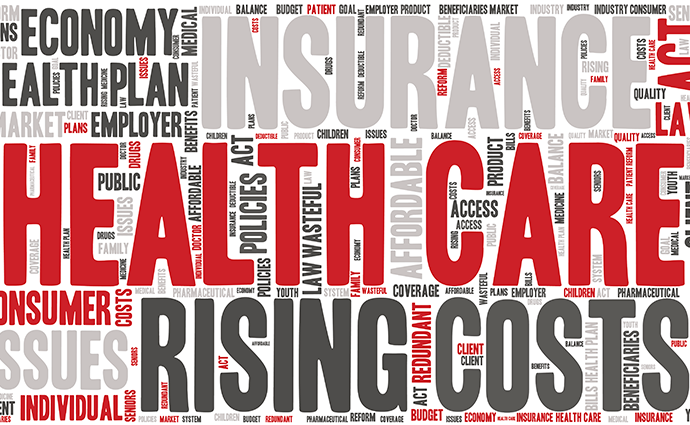Price Not the Only Driver of High Healthcare Costs, Research Shows
The reasons behind total healthcare costs vary by region, so local leaders need reliable data to truly bend the cost curve, a new study shows.

Source: Thinkstock
- Healthcare costs in Colorado are significantly higher compared to other states in the country. A recent analysis by the Network for Regional Healthcare Improvement (NHRI) showed that total cost of care in Colorado was 19 percent higher than the average costs in six other states.
Greater utilization and prices drove the higher-than-average healthcare costs in Colorado. The rate of healthcare utilization in the Mountain state was five percent higher than the six-state average, and prices were 13 percent higher.
Oregon also had higher-than-average prices. However, healthcare resource use was lower than the benchmark for all service lines analyzed. And the Beaver State has had consistently higher prices and lower resource use, the report added.
Each state has its own story to tell when it comes to healthcare, NRHI researchers explained.
“While some national studies find that pricing is the biggest driver of healthcare cost increases, that is not true everywhere. More granular analyses make it possible to identify differences by market,” they stated in the “Data is the Spark, Collaboration is the Fuel” report.
READ MORE: Addressing Productivity, Labor to Bend the Healthcare Cost Curve
The report is the third comparison of total cost of care for individuals with private insurance residing in the six regions. NRHI uses the average cost of healthcare for comparable populations as its benchmark and compares each state to that average, all to understand what drives excessive healthcare costs.
“In healthcare, there’s little question that the costs are too high,” NRHI stated in the report. “As the National Academy of Medicine has long reported, a third or more of spending does nothing to improve health. Because of these and many other factors, we simply do not receive the healthcare we deserve for the dollars we spend.”
Uncovering why healthcare costs are so high is a challenge, though.
According to NRHI, the barriers to establishing a credible approach for quantifying overall healthcare cost, utilization, and price that could also empower national, state, and regional understanding include a lack of:
- Reliable, standardized measures of cost, price, and resource use that could be applied across different populations, such as states, regions, provider practices, health plan memberships, and employer workforces
- High-quality data sets with transparent cost information that include the amount paid for services
- A detailed and well-documented process to ensure consistency in data processing, analysis, and results
Without reliable, high-quality data, policymakers and healthcare stakeholders are attempting to bend the healthcare cost curve without knowing which levers to pull to keep costs down.
READ MORE: Who Should be Held Accountable for Healthcare Costs?
“Before the project began, it was clear previous attempts to reduce costs often had a balloon effect,” NRHI explained. “Market pressure squeezed the balloon to save in one part of the system, such as emergency department use or imaging, but the balloon expanded elsewhere, resulting in the same high healthcare costs. Deflating the balloon would require an understanding of what’s behind the total cost of care and monitoring to ensure overall costs are reduced.”
In light of the barriers, NRHI created the healthcare cost comparison reports using data from the claims databases in six of its member Regional Health Improvement Collaboratives (RHICs). The national membership organization then uses the data to measure Total Cost of Care (TCOC) and Total Care Relative Resource Value, measures developed by NRHI and endorsed by the National Quality Forum.
Using its unique measures, the organization intends to give healthcare leaders reliable data to use when developing healthcare cost reduction initiatives.
“There are ways we can work together to change the system, this report provides trusted data and supports RHICs collaborative multi-stakeholder forums that leverage healthy tension, and local intelligence to address healthcare affordability,” Ellen Gagnon, Executive Director of Healthcare Affordability at NRHI, said in a press release.
RHICs have used the national total cost of care benchmark reports from the last three years to create initiatives and policies that address the specific drivers of healthcare costs in their state or region.
READ MORE: Addressing Prices, Use at Local Level to Lower Healthcare Costs
“The data shuts down anecdotal conversations and opens peoples’ eyes,” Jonathan Mathieu, VP of Data and Delivery at the Center for Improving Value in Health Care (CIVHC), the RHIC serving the state of Colorado, also stated in the press release.
For example, the RHIC in Oregon, HealthInsight, is now sharing the healthcare cost data with its providers, payers, and policymakers. And legislators have created workgroups dedicated to addressing specific components of care delivery that are impacting total cost of care.
“We’re often called upon as having local expertise and a true and tried methodology,” explained Meredith Roberts Tomasi, HealthInsight’s Associate Executive Director. “Legislators see it as an important source of information as they consider how to create a higher-value healthcare system for our state.”
NRHI intends to continue its efforts to deliver reliable, high-quality data on healthcare costs to local leaders. Through their data-driven efforts, the organization hopes to help bend the healthcare cost curve.
